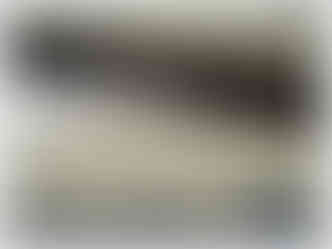Beware the bat false positive!
- Joe Taylor
- Dec 9, 2021
- 4 min read
My inbox recently showed a new message, and upon opening it up I read the following words: “Can we hire you to mitigate bats? Found one at east side vent.” After a quick conversation I learned that this house was in the process of being sold. The home inspector snapped a photo while in the attic of the bat.

This was enough info to warrant a full bat inspection, so I soon made my way over to the home. Upon sleuthing the east side gable, I noted a bat dropping on one of the vinyl louvers of the side gable vent.
There were also a small number of droppings in the landscaping rocks directly beneath the gable vent. This was expected if this was the main entry point into the attic. The remainder of the inspection was uneventful. There were no other possible entry points. I noted from the outside that the vent still had its original vinyl mesh screen behind the louvers, and that it appeared to be fully intact. Hmm, something wasn’t adding up. I couldn’t confirm an entry point into the attic, but the inspector took a picture of a bat from inside the attic. Time to dig deeper!
So up into the attic I proceeded. The first thing that caught my eye was that there was not a single bat dropping on any of the insulation. If a bat has spent much time in an open attic, I would expect it to have flown a few loops and left its evidence on the insulation. Often, I’ll find hundreds of droppings scattered all throughout.

I pulled out my phone, to look at the inspection photo again. Sure enough, there was the bat, with the shot taken from inside this attic. The wheels started turning as I packaged the evidence together:
We have a confirmed picture of a bat, taken from inside this attic.
We have confirmed droppings on the outside of the gable vent, and underneath.
There are absolutely no droppings inside the attic.
Can you provide an explanation that makes sense of the combination of these points?
Two other observations help provide a full explanation:
4. The vinyl mesh behind the gable vent was fully secure.
5. Notice in the photo that the silhouette of the bat is on the mesh screen.
Got it now? The photo was in fact of a bat, but the bat was resting on the outside of the screen. It never made its way into the attic. The bat was simply roosting between the mesh screen and the vinyl louvers. It has found a good place to rest without exposing itself.
In my mind there was still a bit more to explain. Why were there only a small number of droppings under the gable vent? A roosting bat can quickly leave hundreds of droppings in a matter of a few days to a couple of weeks. This wasn’t the case here. Upon thinking about this, I concluded that this bat was probably passing through the area as part of an annual migration. It stays only temporarily, then continued on its journey. This would also explain why the bat was no longer there when I arrived. I commonly find bats in their roosting spot when I’m called in because of piles of droppings on the ground.
A couple of thoughts that I’d like to leave with you:
It is so important to gather all possible information before drawing a final conclusion. In this case, the inspector had drawn a valid conclusion based upon his evidence. However, there was critical information that was only gleaned from a more thorough inspection.
If you call in a professional, ask questions about what they see. Not sure what to ask? To get you started, ask for a list of what they are seeing that informs any conclusion they have drawn about critter activity. Ask them to run through different possible scenarios that explain the evidence. For example, I recently was called to complete an inspection because a customer was hearing scratching in the attic and suspected bat activity. I spotted bat droppings in the attic. However, I also spotted mouse droppings. Hmmm. Was it only bats, only mice, or both bats and mice (or none of the above)? In talking further I learned that the roof had recently been replaced. It sometimes happens that a new roof closes up previous gaps (though usually it does not). But it was enough information to consider the possibility that the bat droppings were a false positive—that the presence of the bat droppings did not necessarily mean bats were present. Sure enough, a more thorough inspection revealed only mice were active. I love it when customers ask me questions about the evidence, as it tells me that we are on the same page in being thorough in my evaluation of the evidence.
My experience has been the successful, efficient wildlife inspections and mitigation bring together a combination of field experience, formal knowledge, and careful sleuthing. That’s what makes this fun!
Do you have a story to share? A question to raise? Add your thoughts in the comments!





Kommentare